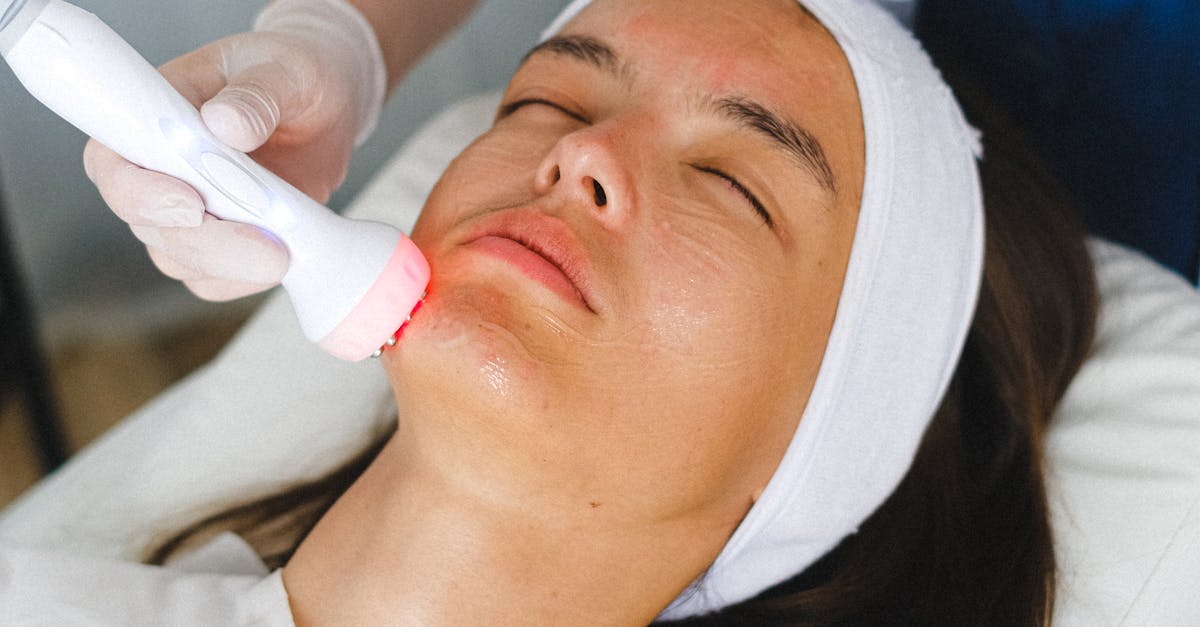
Non-Invasive Cellulite Reduction Techniques: What to Expect
Potential Side Effects and Risks
While non-invasive cellulite reduction techniques are generally safe, there are potential side effects and risks associated with these procedures. Some common side effects include temporary redness, swelling, bruising, and mild discomfort at the treatment site. These reactions are typically mild and subside within a few days after the session.
In rare cases, more serious side effects may occur, such as infection, changes in skin pigmentation, or uneven skin texture. It is essential to follow post-treatment care instructions provided by your healthcare provider to minimize the risk of these complications. It is advisable to discuss any concerns or potential risks with your provider before undergoing any cellulite reduction treatment.
Understanding Possible Complications
Possible complications may arise during or after cellulite reduction treatments. Some individuals may experience temporary side effects such as redness, swelling, or bruising at the treatment site. These reactions are usually mild and subside within a few days. However, in rare cases, more severe complications like infection or skin discoloration may occur. It is essential for individuals considering cellulite reduction procedures to be aware of these potential risks and discuss them with their healthcare provider prior to treatment. It is crucial for both the client and the practitioner to closely monitor any signs of complications and address them promptly to ensure the best possible outcome of the procedure.
Duration and Frequency of Cellulite Reduction Sessions
Cellulite reduction sessions typically vary in duration and frequency depending on the specific technique used and the individual's response to treatment. In general, sessions can last anywhere from 30 minutes to an hour, with some more intensive treatments requiring longer sessions. The frequency of sessions also varies, but it is common for individuals to undergo treatments weekly or bi-weekly initially, followed by maintenance sessions spaced further apart.
It is crucial to follow the treatment plan recommended by your healthcare provider or aesthetician to achieve the best results. Consistency in attending sessions according to the suggested frequency is key to optimizing the effectiveness of the cellulite reduction treatment. By sticking to the recommended schedule, individuals can work towards reducing the appearance of cellulite and improving the overall texture and tone of the skin in the targeted areas.
Treatment Timeline and Recommended Number of Sessions
Once you have decided to undergo non-invasive cellulite reduction treatments, it's important to understand the timeline and the number of sessions typically recommended for optimal results. The duration and frequency of these sessions may vary depending on the specific treatment method chosen and individual factors such as the severity of cellulite and desired outcome.
In general, most non-invasive cellulite reduction treatments require multiple sessions spaced out over a period of several weeks to months. For example, treatments like radiofrequency therapy or laser therapy typically recommend anywhere from 6 to 12 sessions, with sessions scheduled weekly or bi-weekly. It is essential to follow the recommended treatment timeline and attend all sessions as advised by your healthcare provider to achieve the best possible outcome in reducing cellulite.
Expectations and Realistic Outcomes
Individuals seeking cellulite reduction treatments often have high expectations for dramatic results. However, it is important to understand that cellulite reduction techniques can help improve the appearance of cellulite, but complete elimination may not always be possible. Realistic outcomes usually involve a visible reduction in the dimpled appearance of the skin, leading to smoother and firmer skin texture in the treated areas.
Setting achievable goals is essential when considering cellulite reduction treatments. While significant improvements can be achieved, it is important to maintain realistic expectations based on the recommendations of healthcare professionals. By understanding the limitations of non-invasive cellulite reduction techniques and following a personalized treatment plan, individuals can work towards achieving their desired outcomes effectively.
Setting Achievable Goals for Cellulite Reduction
Setting achievable goals for cellulite reduction is an essential step in the process of improving skin texture and appearance. It is important to establish realistic expectations based on individual factors such as age, genetics, lifestyle, and the severity of cellulite. By working closely with a qualified healthcare professional, patients can develop a personalized treatment plan that aligns with their desired outcomes.
When setting goals for cellulite reduction, it is crucial to consider both short-term and long-term objectives. Short-term goals may include reducing the appearance of cellulite in specific areas, while long-term goals could involve maintaining results over an extended period. By breaking down goals into manageable steps, individuals can track their progress and stay motivated throughout the treatment process.
FAQS
What are some non-invasive cellulite reduction techniques available?
Some non-invasive cellulite reduction techniques include radiofrequency therapy, acoustic wave therapy, laser therapy, and vacuum-assisted precise tissue release.
Are there any potential side effects and risks associated with non-invasive cellulite reduction techniques?
While non-invasive cellulite reduction techniques are generally safe, potential side effects may include temporary redness, swelling, and bruising at the treatment site. It is essential to consult with a qualified healthcare provider to understand any risks involved.
How long do cellulite reduction sessions typically last, and how often should they be scheduled?
Cellulite reduction sessions can last anywhere from 30 minutes to an hour, depending on the technique used. The frequency of sessions may vary but is often recommended weekly or bi-weekly for optimal results.
What is the typical treatment timeline for non-invasive cellulite reduction, and how many sessions are typically needed?
The treatment timeline for non-invasive cellulite reduction can vary based on individual goals and the severity of cellulite. Most providers recommend a series of 6-8 sessions to achieve noticeable results.
What are realistic expectations for cellulite reduction outcomes, and how can one set achievable goals?
Realistic outcomes of non-invasive cellulite reduction may include improved skin texture and reduction in the appearance of cellulite. To set achievable goals, it is essential to maintain a healthy lifestyle, including regular exercise and a balanced diet, in conjunction with treatment.
Related Links
The Role of Diet and Exercise in Cellulite ReductionUnderstanding Cellulite Reduction: Causes and Treatment Options